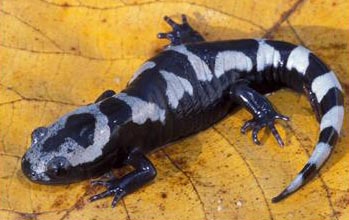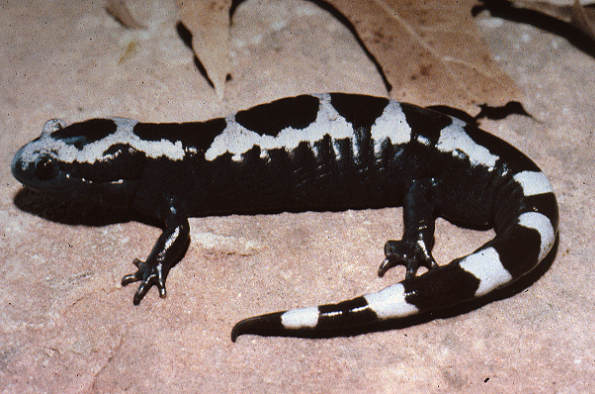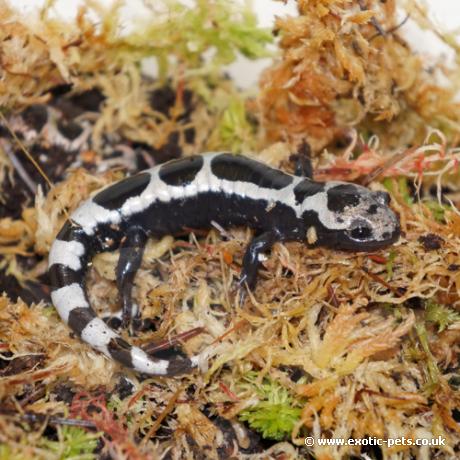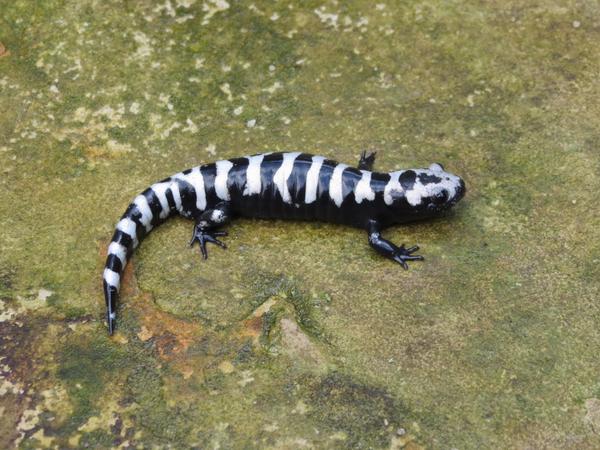Marbled salamander the marbled salamander ambystoma opacum is one of the smaller species averaging at about 3 to 5 inches or 7 to 12 centimeters in length.
What eats marbled salamanders.
The marbled salamander is a stocky boldly banded salamander.
It gets its name from the white or silver bands that cover the black bodies of adult salamanders.
The marbled salamander is typically found in floodplains and low lying fertile areas dominated by hardwood trees.
The marbled salamander lives in forests and woodlands.
The marbled salamander a member of the mole salamander family ambystomatidae tends to occupy drier more sandy or gravelly habitat than most of pennsylvania s salamander species.
They will not eat dead prey.
Effective predators marbled salamanders consume large amounts of food generally consisting of terrestrial invertebrates like worms spiders slugs snails centipedes and a variety of other insects.
The marbled salamander is a carnivore it east slugs snails small worms centipedes and many other insects.
They like to live in damp woodlands close to ponds or streams.
The marbled salamander ambystoma opacum also called the banded salamander is a member of the mole salamander family.
The bands of females tend to be gray while those of males are more white.
Adults can grow to about 11 cm 4 in small compared to other members of its genus.
The marbled salamander is a member of the mole salamander family and can grow to be from 9 to 11 centimeters.
They can be identified by their black dark brown body including its venter with light white silvery crossbands on the dorsum.
The marbled salamander is attracted to their movement and smell.
Marbled salamanders grow to about 3 5 4 25 in 9 10 7 cm in size and are stout bodied and chubby in appearance.
These can either be a mixture of grey or white patterns along a black undertone.
The larvae of the marbled salamander eat zooplankton little tiny organisms that live in the water where the larvae are born.
As one would assume it can be identified by its iconic marble like patterns along the body.
Diet adult marbled salamanders eat invertebrates including earthworms slugs snails centipedes and a variety of insects.
Live earthworms nightcrawlers from a bait shop bloodworms and crickets which can be purchased at pet stores live waxworms live slugs live white worms and tubifex worms they will also eat frozen bloodworms though you may have to move the bloodworm around to catch your salamanders attention.
What does a marbled salamander eat.
Like most of the mole salamanders it is secretive spending most of its life under logs or in burrows.
It can be found in a variety of habitats from moist sandy areas to dry hillsides.
It spends most of its time in a burrow in leaf litter or under bark and logs.









